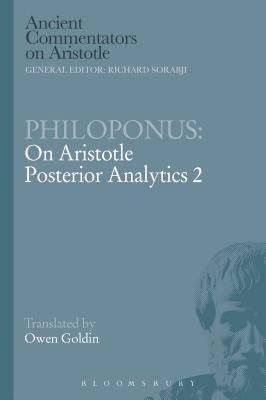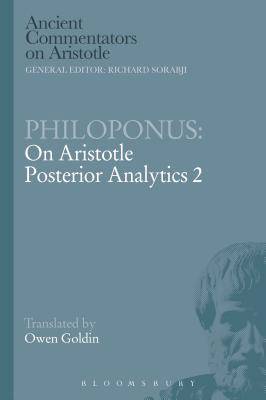
- Afhalen na 1 uur in een winkel met voorraad
- Gratis thuislevering in België vanaf € 30
- Ruim aanbod met 7 miljoen producten
- Afhalen na 1 uur in een winkel met voorraad
- Gratis thuislevering in België vanaf € 30
- Ruim aanbod met 7 miljoen producten
Zoeken
€ 373,45
+ 746 punten
Omschrijving
The Posterior Analytics contains Aristotle's philosophy of science. In Book 2, Aristotle asks how the scientist discovers what sort of loss of light constitutes lunar eclipse. The scientist has to discover that the moon's darkening is due to the earth's shadow. Once that defining explanation is known the scientist possesses the full scientific concept of lunar eclipse and can use it to explain other necessary features of the phenomenon. The present commentary, arguably ascribed to Philoponus incorrectly, offers some interpretations of Aristotle that are unfamiliar nowadays. For example, the scientific concept of a human is acquired from observing particular humans and repeatedly receiving impressions in the sense image or percept and later in the imagination. The impressions received are not only of particular distinctive characteristics, like paleness, but also of universal human characteristics, like rationality. Perception can thus in a sense apprehend universal qualities in the individual as well as particular ones. This volume contains an English translation of the commentary, accompanied by extensive commentary notes, an introduction and a bibliography.
Specificaties
Betrokkenen
- Auteur(s):
- Vertaler(s):
- Uitgeverij:
Inhoud
- Aantal bladzijden:
- 224
- Taal:
- Engels
- Reeks:
Eigenschappen
- Productcode (EAN):
- 9780715637883
- Verschijningsdatum:
- 1/07/2009
- Uitvoering:
- Hardcover
- Formaat:
- Genaaid
- Afmetingen:
- 155 mm x 234 mm
- Gewicht:
- 498 g

Alleen bij Standaard Boekhandel
+ 746 punten op je klantenkaart van Standaard Boekhandel
Beoordelingen
We publiceren alleen reviews die voldoen aan de voorwaarden voor reviews. Bekijk onze voorwaarden voor reviews.








